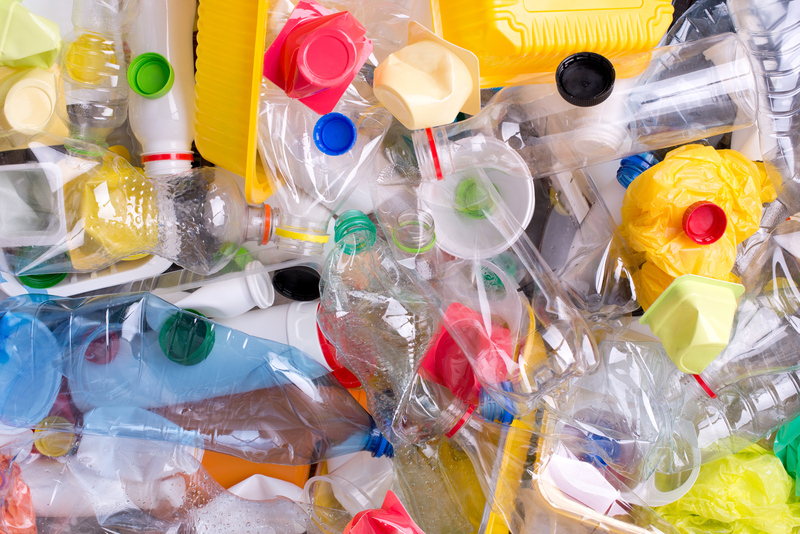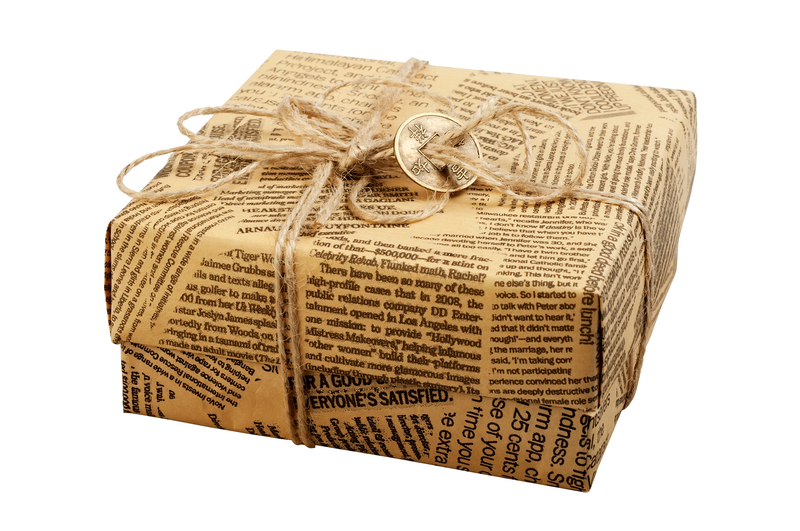How to Responsibly Dispose of Old Pots and Pans
Every home cook eventually faces the dilemma of what to do with old cookware. Over years of use, pots and pans can become scratched, warped, or lose their nonstick coating, making them less effective or even unsafe to use. Simply tossing them into the trash is not the best option for the environment. So, how can you responsibly dispose of old pots and pans? In this comprehensive guide, we'll explain eco-friendly ways to recycle, reuse, and repurpose your unwanted cookware, ensuring your actions have a positive impact on the planet.
The Environmental Impact of Improperly Disposing of Cookware
Many people don't realize that improperly disposing of cookware can have significant environmental consequences. When metal pots and pans are tossed in the landfill, they don't decompose easily. Nonstick coatings may also leach chemicals that can harm soil and water. Responsible disposal helps reduce landfill waste, conserves resources, and can even support local charities.
Why Should You Care?
- Landfill space is limited: Cookware takes up valuable landfill space and doesn't break down quickly.
- Metals are recyclable: Items like stainless steel, aluminum, and cast iron can be recycled into new products, conserving energy.
- Chemical leaching: Nonstick coatings may release toxins if not disposed of properly.
- Global impact: Every effort to recycle or donate reduces greenhouse gas emissions associated with the production of new materials.

Identifying the Material of Your Old Pots and Pans
Before deciding how to dispose of your old pots and pans, it's essential to know their materials. This determines recycling eligibility and the best route for disposal.
- Aluminum: Lightweight, often shiny metal. Easy to recycle and a common cookware material.
- Stainless Steel: Durable, shiny, and resistant to rust. Highly recyclable.
- Cast Iron: Heavy, dark metal. Can be recycled or, better yet, refurbished and reused.
- Copper: Reddish metal, sometimes with a tin or stainless lining. Valuable for recycling, but may require special handling.
- Nonstick Coated (e.g., Teflon): Often applied to aluminum or steel. Nonstick coatings can complicate recycling efforts.
What to Do Before Disposing of Old Pots and Pans
To determine the best method for responsibly getting rid of your cookware, check for any local regulations and restrictions regarding recycling household metals or donating used kitchen items. Clean your pots and pans thoroughly, since dirty items may not be accepted for recycling or donation.
- Remove any food residue.
- Check for removable handles or accessories that may be made from different materials.
- If possible, separate the metal parts from plastic or wooden handles for easier recycling.
Top Ways to Responsibly Dispose of Old Pots and Pans
1. Recycling Old Pots and Pans
Recycling is one of the greenest ways to dispose of cookware. Here's how you can recycle pans:
1.1 Curbside Metal Recycling- Many communities offer curbside recycling for metals. Contact your local recycling service to see if they accept small household metal items like pots and pans.
- Make sure the pots and pans are free of food and non-metal attachments (like plastic or glass lids).
- Nonstick or coated cookware may not be accepted, so check first.
- Scrap yards are happy to accept most types of metal cookware (aluminum, stainless steel, copper, cast iron).
- Find your nearest scrap metal recycler and ask about their requirements. Many pay per pound for metals like copper or aluminum.
- Pro Tip: If the nonstick coating is chipped or no longer functional, many centers will still take your pans after it's separated.
- Some cookware manufacturers operate recycling programs for their products (e.g., Calphalon, GreenPan).
- Contact the brand or check their website to see if they offer a take-back program for responsible cookware disposal.
2. Donating Usable Pots and Pans
If your cookware is in good, safe condition, consider donating old pots and pans to someone in need. This extends the life of the items and helps your community.
- Local Charities and Shelters: Nonprofits, homeless shelters, and community kitchens often need kitchenware donations.
- Thrift Stores: Stores like Goodwill and Salvation Army usually accept gently used cookware.
- College Students or First-Time Renters: Offer your clean, used pans to students or people moving into their first home.
Tip: Ensure there are no chips, cracks, or unsafe coatings before donating.
3. Repurposing Old Pots and Pans
Creative upcycling gives pots and pans a new life, diverting them from landfills. Here are a few inspiring ideas:
- Planters: Turn an old pan or stockpot into a unique flowerpot for your garden or patio. Just add drainage holes.
- Bird Feeders: A handled pan can hang from a tree as a bird feeder.
- Kitchen Decor: Use vintage or decorative pans as wall art, mirrors, or clocks.
- Organization Tools: A deep pan makes a handy caddy for craft supplies, tools, or toys.
- Water Bowls: Large pans can serve as outdoor water bowls for pets or stray animals.
If you fancy a DIY project, search for upcycling ideas online for more inspiration.
What to Do with Nonstick, Teflon, or Coated Pans?
Nonstick pans (Teflon or ceramic-coated) present a unique challenge because their coatings complicate recycling. Here's how you should responsibly dispose of these types:
- Contact Local Waste Authority: Confirm whether your recycling facility accepts nonstick cookware.
- Remove Non-Metal Parts: If possible, remove handles and lids before recycling.
- Scrap Yards: Some metal recyclers will accept nonstick pans if they can separate out the metal. Call ahead to ask.
- Mail-Back Programs: Some brands and national recycling initiatives offer mail-in options for hard-to-recycle cookware.
Eco Tip: When purchasing new cookware, consider brands that offer eco-friendly or recyclable options.
How NOT to Dispose of Old Pots and Pans
Avoid these common environmental missteps:
- Don't put cookware in your curbside bin without confirming: Many recycling programs don't accept metal or coated pans in standard household bins.
- Don't incinerate: Burning old pans, especially those with coatings, can release toxic fumes.
- Don't donate unsafe cookware: Damaged, chipped, or peeling nonstick pans can pose health risks.
Local Regulations and Special Collection Events
Many communities offer special collection events or drop-off locations for bulky items and hard-to-recycle materials. Check your municipality's website for:
- Hazardous waste collection days.
- Special recycling events for household goods.
- Guidelines for scrap metal disposal.
It's important to adhere to local guidelines for responsible disposal of old pots and pans to avoid fines and environmental harm.
Choosing Sustainable Cookware for the Future
To minimize future waste, select sustainable cookware options that are built to last, are made from recyclable materials, or can be refurbished. Here's what to look for:
- Durable Materials: Cast iron and stainless steel can last a lifetime with proper care.
- Recyclable Construction: Choose pans without synthetic coatings or with removable handles/lids.
- Lifetime Warranties: Brands that stand behind their products may repair or recycle old cookware for you.
- Green Production: Opt for companies that prioritize environmentally friendly manufacturing and packaging.
Care Tips to Extend the Life of Your Cookware
- Follow manufacturer care instructions for cleaning and heat levels.
- Avoid metal utensils on nonstick surfaces.
- Season cast iron pans regularly to prevent rust and maintain the nonstick surface.
- Store cookware carefully to prevent warping or scratching.

Frequently Asked Questions about Disposing of Old Cookware
Can I put old pots and pans in the regular trash?- While you can, it's far better for the environment to recycle, donate, or repurpose them first.
- Where possible, separate the metal cookware from non-metal parts for easier recycling.
- Not always. Contact your recycling service to check if they accept pans with coatings. Many scrap yards will accept once the coating is worn or separated.
- Contact your local scrap metal recycler, municipal recycling center, or search for community drop-off events.
- Yes! Brands such as Calphalon and some local retailers offer responsible take-back services for old pans.
Summary: The Responsible Way to Get Rid of Old Pots and Pans
Disposing of old pots and pans responsibly is essential for reducing environmental impact and supporting circular resource use. Consider the following steps for the best results:
- Determine the pan's material and check for donation or recycling possibilities.
- Clean your cookware and remove non-metal attachments.
- Donate usable items to charity, thrift stores, or people in need.
- Recycle metals at scrap yards or through special recycling programs.
- Repurpose creatively by making planters, bird feeders, or unique home decor.
- Avoid landfill disposal whenever possible to help the planet.
- Select sustainable cookware in the future to further minimize kitchen waste.
Each responsible choice you make helps protect natural resources, reduces waste, and builds a greener, cleaner future for everyone. Make the commitment today to dispose of old pots and pans in an eco-friendly, meaningful way!
For more tips on sustainable kitchen management and responsible recycling, bookmark this guide and share it with your friends!